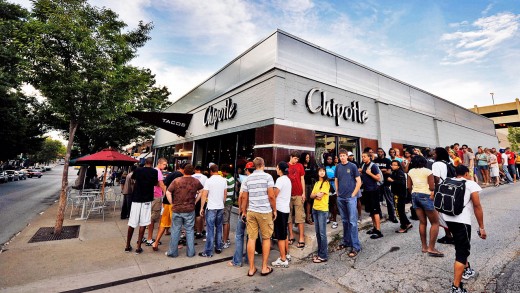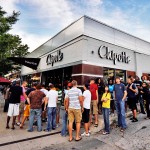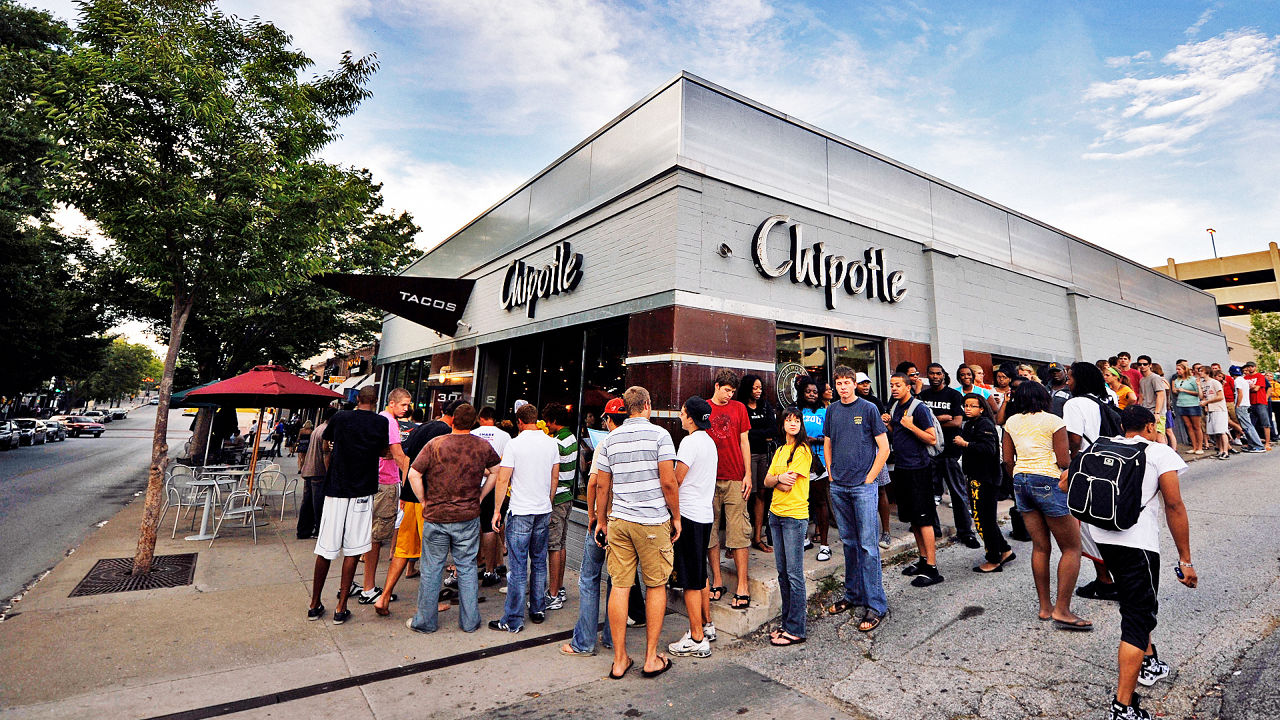prime Chef problem: Make food For The plenty
The celebrity chef obsession with quick-casual chains has less to do with Chipotle-model riches than with getting back to what they love.
June 24, 2015
Kevin Gillespie, a celebrated Atlanta chef, remembers the exact second he decided to leave the arena of luxurious dining: He noticed that his folks had stopped coming to Woodfire Grill, the stylish restaurant where he was once the co-owner and govt chef.
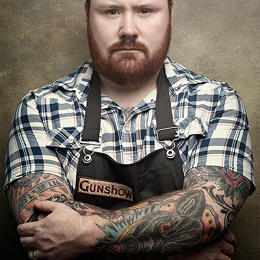
ingredients on the restaurant, served on effective china and silverware, integrated creations like foie gras with banana and cashews, octopus tempura, and squab chook with saffron potatoes. Dinner may run upwards of $one hundred or $200 an individual, but his oldsters knew they could cease through whenever they wanted and the meal can be on the home. “after I asked my dad what was once going on, it unexpectedly changed into clear that he felt that as an average blue collar employee, Woodfire Grill was once just not a place he was once at ease spending time at,” Gillespie tells me. “It broke my heart. My folks mean lots to me and i hated to think that I was once a part of a global that they didn’t really feel like they belonged to. As chefs, we are blue collar workers ourselves and at positive eating eating places we aren’t cooking for our own individuals.”
Gillespie acted quick. In 2013, proper after that painful conversation, Gillespie left his submit at Woodfire Grill and later that 12 months, he opened an informal Southern restaurant referred to as Gunshow. He introduced the identical ardour and creativity to his food as he had at Woodfire Grill, however the whole thing on the restaurant was once meant to really feel acquainted and humble. moderately than haute delicacies, he aimed to create perfectly executed variations of what chances are you’ll consume at your grandma’s home: goat cheese with Georgia strawberries, pork belly steamed buns with peaches and cream, and the wildly fashionable banana pudding.
Gillespie says that he works exhausting to keep costs low, which can also be exhausting due to the fact that he is committed to the use of contemporary, local produce. guests can stroll out spending $30 a person, and lots of go all out and spend within the vary of $50. however in all probability greater than the price, the atmosphere of Gunshow is designed to feel homey and welcoming; a spot Gillespie’s own father would experience a night out together with his pals.
past this 12 months, Gillespie went a step further in democratizing his food. He opened every other casual restaurant called Revival, which has a typical Southern family-fashion means of “meat and three,” the latter referring to three aspect dishes.
not restrained with the aid of the principles Of positive eating
Gillespie’s now not the one chef drawn to the theory of moving away from fancy, expensive restaurants to extra casual fare. He’s driving a wave that is finding expression in the movements of fantastic chefs in almost every major metropolis throughout the us of a. chefs with burgeoning luxury restaurant empires at the moment are increasing into lower-priced ideas: Jose Andres has launched Beefsteak, a whole grain and vegetable bowl restaurant, which he hopes to amplify to a series around the usa, whereas David Chang has simply opened Fuku, a ingenious fried hen sandwich restaurant. A meal at both restaurant will run you between $10 and $15. Joshua Skenes, of the famed Saison restaurant in San Francisco, is about to open fats Noodle this summer season, if you want to specialise in hand-pulled noodles from the Sichuan region of China and cost under $10 a bowl. and then there is Mark Ladner, the chief chef at Del Posto, a Michelin-starred big apple restaurant, who took closing summer off to take a meals truck referred to as Pasta Flyer on the street, serving perfectly cooked pasta.
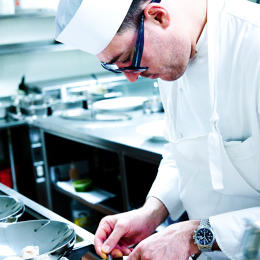
ahead of Chipotle, before Shake Shack, and earlier than Roy Choi’s Kogi BBQ food truck, the profession direction for talented, ambitious cooks used to be well defined: Work your approach up the posh dining restaurant circuit with a view to make a name for themselves and get a shot at running and perhaps owning your own location, after which if issues go in reality right, perhaps a couple of high-end eating places. To Gillespie’s reduction, and lots of of his colleagues, these days seem like over. “it’s a nice time to be a chef because now we have more creativity than ever,” Gillespie says. “We’re no longer restricted by way of the foundations of high-quality eating; we will actually create any roughly restaurant that we wish—upmarket, downmarket, a food truck, or maybe even one thing in between that hasn’t been invented yet.”
Gillespie believes that there had been a couple of cultural shifts over the last decade that have produced this world of latest alternatives. Millennials don’t appear to be so impressed with pricey meals; they care about whether the meals is well crafted, in the community sourced, and delicious. They know that this package may also be delivered at an inexpensive worth. because of this, as of late’s chefs don’t feel that their reputation rests exclusively on how so much a diner is prepared to pay for their meal.
but if price is just not the differentiator, how does the diner tell the variation between Gillespie’s Revival and different restaurants in the same worth point where the food may be of decrease high quality? In different words, what does a chef need to do to face out in the crowded, competitive world of casual dining? “It comes right down to attention to element,” Gillespie explains. “That’s what it at all times came all the way down to, even at the dearer eating places. I spend so much time enthusiastic about every part of the meal and the dining experience. that’s the place all my energy goes.” He believes that diners are ready to really feel the variation when their dinner has been completely finished, even though they aren’t ready to pinpoint all of the ways that Gillespie has been orchestrating it at the back of the scenes. “That’s the magic of eating places,” Gillespie goes on. “you could’t tell precisely why you feel so great on the finish of the meal, however you simply comprehend you do.”
specializing in The food, no longer The Silverware
outside observers might suppose that informal restaurants have decrease margins than their more expensive counterparts, but that’s no longer essentially proper. effective-dining eating places invest millions of bucks on high places, interior design, silverware, and big staffs. whereas they charge extra per diner, the various world’s most expensive eating places usually are not essentially giant moneymakers. The dynamic shifts at a more casual joint. Gillespie says that doesn’t need to put money into crystal drinkware—mason jars are the entire rage and value a fraction of the associated fee. as a substitute, he spends extra time occupied with shopping for fine quality substances whereas still sustaining affordable prices.
Mark Ladner, who has been the executive chef of recent York’s Michelin-starred Del Posto for a decade, has a job that is about much more than the food. He manages a crew of 200 folks. “My position today involves helping younger, ambitious cooks who are just starting out in their careers,” Ladner says. “It’s hugely pleasant. It’s the more or less pride you get from being a mentor or a trainer.” He tells me that he has labored laborious to maneuver far from the militaristic means in kitchens the place extra senior chefs terrify their subordinates—a la tv’s Gordon Ramsay—and as a substitute goes for a kinder, more educational model. the other part of his job is logistical. Del Posto is better than most different luxurious restaurants, seating a whole bunch of visitors at a time, and unlike many similar institutions he tries to make it simple for patrons to tweak orders on account of allergic reactions or dietary preferences. “i’ve spent hours going via each merchandise on the menu, deconstructing it and reconstructing it with a relatively different set of components to steer clear of gluten or pork,” he says. In many ways, his day-to-day work sounds so much like being a management marketing consultant, strategically streamlining procedures and inside techniques. And while he enjoys this, it doesn’t enable him to make use of a few of his different skills, like say, cooking.
which is why Ladner has been tinkering with a more informal dining thought for a couple of years now. It permits him to get again to the basics of being a chef: the food and the visitors. final summer season, Ladner went even further, taking a couple of weeks off from Del Posto to operate a food truck, the ne plus ultra of the casual eating phenomenon. this might enable him to focus firmly on food and particularly his area of specialty: perfectly cooked al dente pasta (that is, by the way, gluten free). “In the us, it is regularly onerous to get completely cooked al dente pasta that tastes the way in which it will have to,” he says. Serving less expensive however top of the range pasta from a meals truck was once a method for him to share his favourite meals with a much broader swath of individuals. Pasta Flyer visited many college campuses—Harvard, Wellesley, Yale, and his personal alma mater, Johnson and Wales university in windfall, Rhode Island—allowing him to present young, impressionable college students on a shoestring finances a style for neatly-made pasta. in contrast to his work at Del Posto, the food truck allowed Ladner to get nearer to both his food and his shoppers. quickly, he is hoping to open a permanent pasta save in ny alongside the same traces as Pasta Flyer.
the future of casual eating Is ultra-cheap dining
Jose Andres, a chef with an empire of eating places spanning the united states of america from the mediterranean Jaleo and Zaytinya in D.C. to the chinese language-Mexican fusion restaurant China Poblano in Las Vegas to the luxurious Tres in los angeles, is fascinated by growing the following chain of fast-casual eating places within the u . s .. Beefsteak, his new restaurant concept in D.C., permits diners to create vegetable and complete grain bowls from seasonal elements. along with his company, the ThinkFoodGroup, he’s hoping to grow Beefsteak into a national chain, very like Chipotle or Shake Shack.
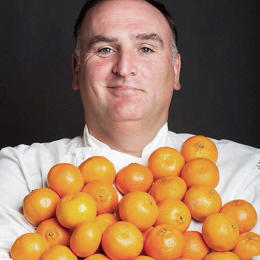
however in many ways, the short-casual thought isn’t that fascinating to him. Andres believes the next wave of chef-created eating places must center of attention on a fair lower cost level and will have to goal underserved communities. “that you could get a bowl from Beefsteak for roughly $10,” Andres says. “but for those who’re a single mother with a household, that’s no longer that cheap. Two ingredients at a quick-informal restaurant costs you $20 a day per person, which is some people’s entire wages.”
Andres factors to the work of his fellow chefs, Roy Choi and his companion Daniel Patterson, who’re engaged on Loco’l, a extremely reasonably priced eating concept in an effort to be located in very bad neighborhoods, starting with l. a.’ Watts and San Francisco’s Tenderloin. the idea is to create quick food that’s healthy and whose value is on par with, or in all probability even more cost-effective than, McDonald’s. Choi and Patterson are hoping to launch Loco’l within the iciness. (They declined to take part on this story as a result of they are at present concerned with branding, menu R&D, and design.)
Andres is urging Choi on, however he’s also dreaming about beginning his personal uber-cheap restaurant which he has tentatively named (if handiest in his personal head) the “folks’s Diner.” For Andres, the truth that top, talented chefs were able to transgress the norms of the culinary business with the aid of expanding into more cost effective, extra democratic meals approach that they have what it takes to take that idea even additional and help individuals who in point of fact want it. “Even McDonald’s shouldn’t be truly that low cost while you’re negative,” he explains. “that you can spent $7 or $10 there for a full meal. I’m thinking extra about meals that it’s essential to buy for $three or $four a plate.”
find out how to keep prices that low, he thinks, is to serve food cafeteria style, with huge steaming strays of high quality meals that is cooked in bulk. after all, he believes that it’s that you can imagine to make the aesthetic and delivery of this meals sexier than your moderate cafeteria. (This, too, is the animating concept behind virtual restaurants Sprig, Munchery, etc, though they’re all at the moment targeting the quick-casual $10 price level.) whereas there’s a shortage of wholesome eating places in underserved neighborhoods all through the u . s . a ., Andres acknowledges that there are at all times hardworking entrepreneurs who’re seeking to set up inexpensive restaurants in these communities, but it isn’t easy for them to make their business work. He believes that centered chefs may leverage their resources, funding sources, and creativity to help solve this drawback. Andres acquired a style of how this could work with a bakery he set up on the outskirts of Port-au-Prince in Haiti, throughout the nonprofit that he centered referred to as World valuable Kitchen. “You see that it’s no longer as regards to handing over healthy meals to people who need it,” Andres says. “It’s about bringing vanity to communities the place companies have no longer been curious about investing in that previous. It changes everything.”
For now, Andres tells me that the folks’s Diner thought remains to be one thing that he’s ruminating on. “I actually like that title,” Andres says with amusing. “I must trademark it.” the way forward for being a chef won’t lie in what number of stars and James Beard Awards that you would be able to amass, however quite how many people that you would be able to cost effectively feed.
quick company , learn Full Story
(142)

